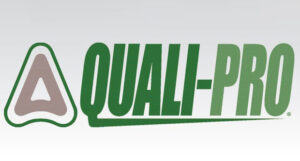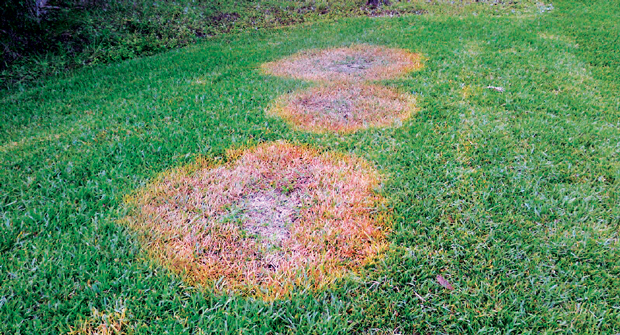The patch diseases in turfgrass are a pesky problem for lawn care operators (LCOs) to deal with from late spring to the fall.
Being heavily weather dependent and causing tan or brown spots with wilting grass, dealing with brown, summer and large patch can be an annoying fungal fight that takes some experience to correctly identify and manage.

So, how does your knowledge of these turf pests stack up? Read about the differences between the three diseases and take the quiz below.
Brown patch
Jay Wyrick, turf and ornamental agronomist at FineTurf in North Carolina, says brown patch (Rhizoctonia solani) forms in humid conditions when day and night cumulative temperatures reach roughly 150 degrees F (such as 80-plus degrees in the day and 70-plus degrees at night) mixed with some rain, humidity or excessive irrigation.
Once the disease has established itself, large, circular patches of brown turf will soon appear.
“You’ll get these irregular black lesions or tan lesions that have a black smoke ring around them,” Wyrick says. “It kind of makes the leaf almost shrivel in the middle, and typically you don’t see it toward the tip of the blade.”
Wyrick says once the weather starts showing signs of 150-plus degree F days and nights, he and his team ready propiconazole and azoxystrobin to provide chemical control.
Large patch
Large patch is similar to brown patch, coming from slightly different strains of the Rhizoctonia solani fungus. However, instead of targeting turfgrass when the weather gets hotter and more humid, large patch more commonly attacks in the spring and fall when soil temperatures drop to 70 degrees F.
Another slight difference between large and brown patch is the damage it causes, with large, brown rings in the turf forming. Oftentimes, the center of the affected area will recover, resulting in a donut-like appearance.
Wyrick says azoxystrobin and propiconazole work on large patch, but he also recommends Xzemplar fungicide on warm-season turf for more broad-spectrum control with dollar and other leaf spot diseases.
Summer patch
Summer patch is where the diseases start to differentiate a bit more, as this fungus (Magnaporthe poae) primarily affects Kentucky bluegrass, annual bluegrass and fine fescues. Like brown patch, this summertime nuisance thrives in hot weather and is exacerbated by stressful conditions like compact soil, drought or heavy thatch.
Summer patch is known for producing irregular or crescent-shaped patches (often 6 inches to 3 feet across) that turn yellow to brown as the leaf blades die. Treating this fungus is especially important, as diseased areas may coalesce, making it harder to identify the problem in severe cases.
While azoxystrobin and propiconazole can be effective against summer patch, other ingredients such as myclobutanil can be used as well.


